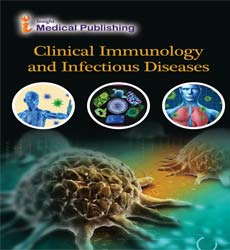Development of a point-of-care HIV-1 treatment monitoring assay for resource-constrained settings
Mazhar Sher
Florida Atlantic University, USA
Abstract
There is a dire need to develop portable, cost-effective, and user-friendly biosensing devices for resource-limited settings. The currently existing laboratory-based diagnostic methods require expensive reagents and highly trained personnel. Hence, these assays are not suitable for resource-constrained settings with very limited financial resources, basic healthcare infrastructure, and few trained healthcare professionals. In order to cater this problem, a portable, inexpensive, and easy to use disease diagnostic platform is developed for the treatment monitoring of HIV- 1 virus. The developed assay is used to quantify the CD4+ T cells using electrical impedance spectroscopy. It is a magnetic actuation platform that utilizes highly specific antibody-coated magnetic microparticles to isolate CD4+ T cells from a 30 μL drop of human blood sample. The isolated cells are lysed and subsequently quantified using electrical impedance spectroscopy. The developed assay showed a limit of detection of 25 cells / μL and provided reliable CD4+ T cell enumeration in the range of 25– 800 cells/μL. The developed rapid assay provided quantification results in 5 minutes time frame. There is no need of any off-chip sample preparation step. The human involvement has been minimized to a greater extent. This impedanceˇbased immunoassay has the potential to significantly improve the CD4+ T cells quantification process, especially for resource-limited settings.
Biography
Mazhar Sher received his BS in Electrical Engineering from University of Engineering and Technology, Peshawar- Pakistan in 2009. Later, he did his Master of Science in Electrical Engineering in 2013 from same University. He earned his PhD from Florida Atlantic University in Spring 2020. His research is focused on the development of diagnostic assays for resource limited areas, microfluidic sensors, and applications of micro/nanotechnology in medicine

Open Access Journals
- Aquaculture & Veterinary Science
- Chemistry & Chemical Sciences
- Clinical Sciences
- Engineering
- General Science
- Genetics & Molecular Biology
- Health Care & Nursing
- Immunology & Microbiology
- Materials Science
- Mathematics & Physics
- Medical Sciences
- Neurology & Psychiatry
- Oncology & Cancer Science
- Pharmaceutical Sciences
